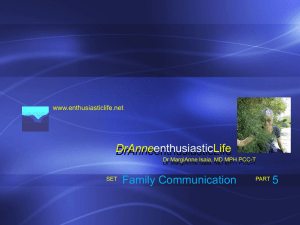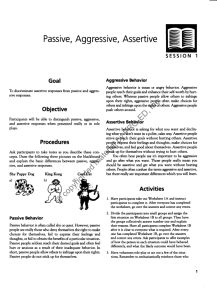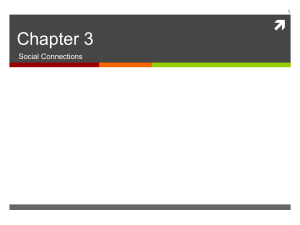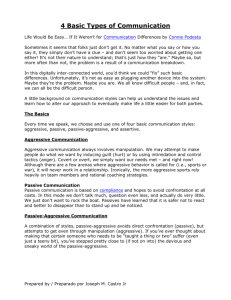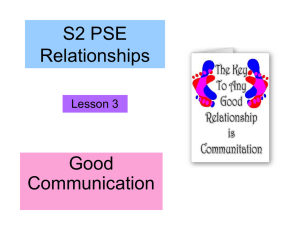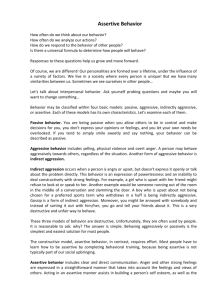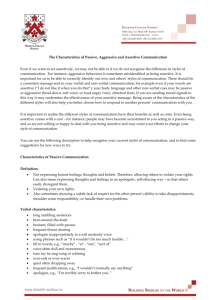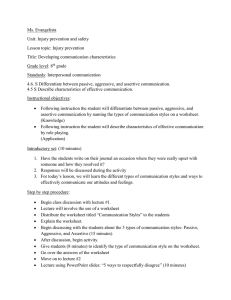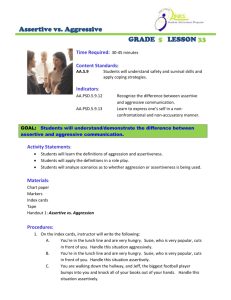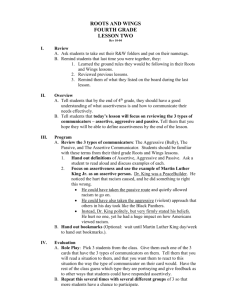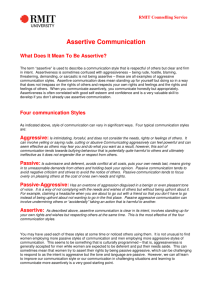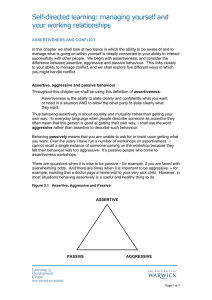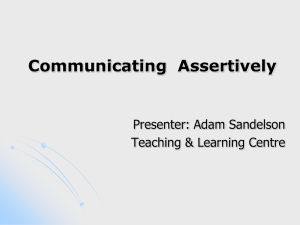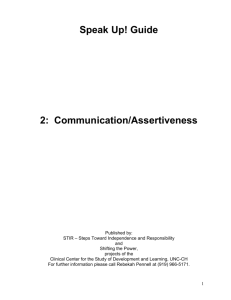Effective Communication Approaches
advertisement
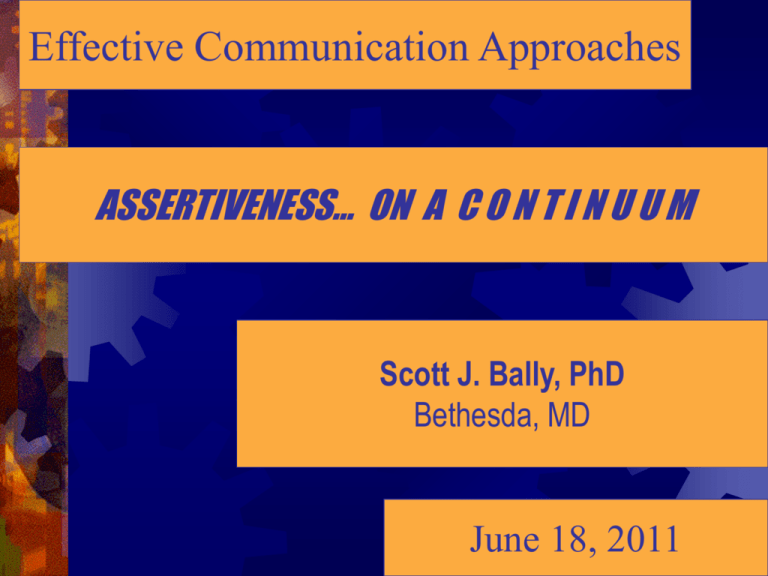
Effective Communication Approaches ASSERTIVENESS… ON A C O N T I N U U M Scott J. Bally, PhD Bethesda, MD June 18, 2011 Our Objectives for Today Our participants will: Consider a problem solving approach to difficulties related to hearing loss Do a reality check on what can be changed and what can’t be changed Consider a continuum of assertiveness Self-identify their assertiveness quotient Identify strategies that fit . One Problem = One Solution! NOT! Hearing Loss Related Problem s Are Complex Under Ideal Conditions Hearing Loss May Not Be a Problem, Even for a Person With Hearing Loss Hearing Loss is compounded by Sender problems Environmental problems And You! 2+2=5 Visual plus Auditory plus Context plus Linguistic Knowledge Additional sensory input (e.g. tactile) Maximize Your Likelihood Of Understanding Maximize Visual input Maximize Auditory Input Use Context Use Your Linguistic Knowledge Identify the Contributing Factors Sender problems: mumbling, soft speech, chewing gum, moving around, speech problems, etc. Environmental problems: background noise, reverberation, glare, distance, line of vision, etc. Receiver problems: broken hearing aid, dead batteries, fatigue, impatience, other things on your mind, etc So…what’s the problem?? At the end of a hard week, you are in a noisy restaurant with three soft spoken friends. They are speaking rapidly and often at the same time, eating and drinking and flirting with the waitperson. You have a directional microphone on your hearing aid, as well as a DAI microphone that plugs into your aid, BUT you didn’t bring extra batteries and your aid just died. What’s the problem?? Your hearing loss? Change what can be changed… Don’t frustrate yourself and waste time and effort over things that cannot be changed! e.g. Accents, echoic hallways; speech problems; background noise at a hockey game; road noise Environmental Problems Change the environment, or.. change environments! “The Hot Box” You are sent to Denver by your club to learn a computer program that your club needs to use. They are paying for you to go and learn it…and come back to teach it to everyone else. You arrive at the meeting, register and find a seat close to the front. 150 other people too! The speaker is on a small stage. He is a good speaker and easy to lipread However… “The Hot Box” (continued) However… You notice the room is getting hotter and hotter as you listen. You take off your jacket and fan yourself with your notebook It becomes so warm you are starting to fall asleep. BUT People are depending on you…you must get that information. You notice other people dozing, removing layers of clothes and fanning themselves. WHAT WOULD YOU DO? Think of assertiveness on a continuum [1_ _ 2_ _ 3_ _ 4_ _ 5_ _ 6_ _ 7_ _ 8_ _ 9_ _ 10 ] Passive Assertive Aggressive [1_ _ 2_ _ 3_ _ 4_ _ 5_ _ 6_ _ 7_ _ 8_ _ 9_ _ 10 ] Passive Assertive Aggressive Some of us would like to be more assertive Some of us wish that others would like to be less aggressive This requires some small changes in thinking and behavior It’s Not Black, White and Gray Passive ~ You do nothing, hoping for change to occur; your needs are not being met Assertive ~ You identify and use a behavior that will result in having your needs met while respecting the rights of the other person Aggressive ~ You use an approach that disregards the rights of the other person; your need may or may not be met It’s easy to say: “Be more assertive!” But it’s not so easy to do. Why? Personality Habitual behaviors [1_ _ 2_ _ 3_ _ 4_ _ 5_ _ 6_ _ 7_ _ 8_ _ 9_ _ 10 ] Passive Assertive Aggressive Think of as many solutions to a particular problem as possible (remember the Hot Box). These are your options. Consider which options are most likely to achieve the desired results AND that you would be able to embrace. [1_ _ 2_ _ 3_ _ 4_ _ 5_ _ 6_ _ 7_ _ 8_ _ 9_ _ 10 ] Passive Assertive Aggressive If you are not getting your needs met, it may be time to stretch. It takes self-commitment and a little courage. Don’t try a quantum leap. Think about moving one or two spaces over on the continuum. Think through your options carefully …and give it a try. [1_ _ 2_ _ 3_ _ 4_ _ 5_ _ 6_ _ 7_ _ 8_ _ 9_ _ 10 ] Passive Assertive Aggressive At a recent conference, we observed a person at the hotel Registration Desk say to the clerk: “You don’t have any more of those hearing impaired kits, do you?” (The clerk responded with a blank look) What do you see as the problem here? What could be done to most successfully get his needs met ? 3 Elements of a Successful Assertive Approach BE SPECIFIC ~ let the person know exactly what you would like them to do PROVIDE A RATIONALE ~ let the person know why you need the accommodation BE COURTEOUS ~ in both words and behavior People Problems Why do they do what they do?? We hope this has given you some food for thought… Questions? Comments?


